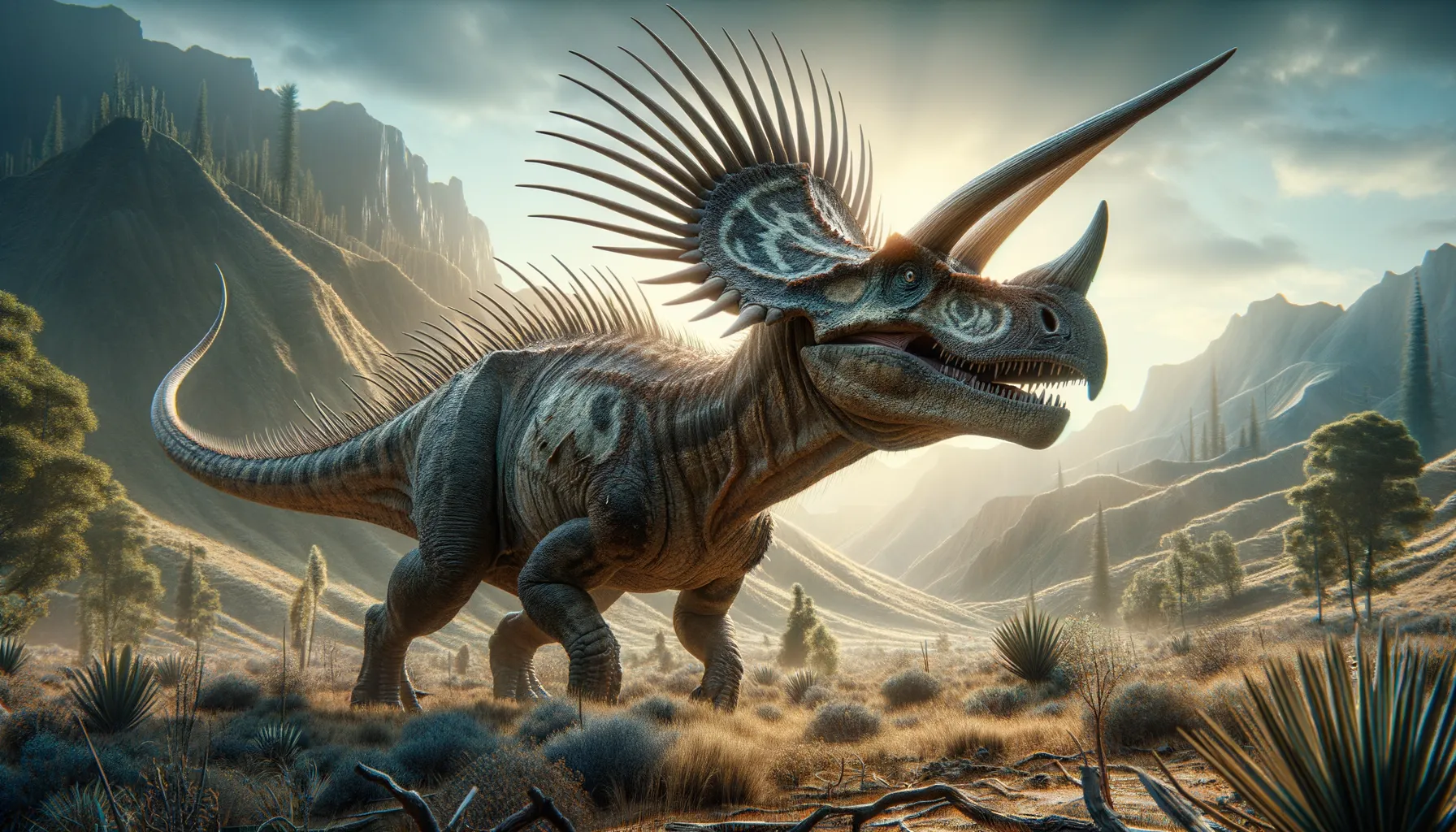
Spiclypeus
Horned titan of the ancient forest!
Period
Cretaceous
Length
Around 6 meters long.
Height
About 2 meters tall at the shoulder.
Weight
Approximately 4 tons.
Spiclypeus was a ceratopsid dinosaur, known for its distinctive spiked frill and brow horns. This herbivore roamed North America during the Cretaceous period, approximately 76 to 75 million years ago. Its fossil remains provide valuable insights into the diversity of horned dinosaurs and the evolutionary adaptations they developed in response to their environments.
Diet
Spiclypeus was a herbivore, feeding primarily on low-lying vegetation. Its beak-like mouth was ideal for cropping plants such as ferns and cycads in its forested habitat. The structure of its teeth suggests it was well-suited for grinding tough, fibrous plant material.
Hunting
Spiclypeus did not hunt as it was strictly herbivorous. It likely spent much of its time foraging for plants, possibly in herds for protection against predators. Its large size and horns served as deterrents to carnivorous dinosaurs.
Environmental challenges
Surviving in the Cretaceous period, Spiclypeus faced fluctuating climates and competition for food. Predators like tyrannosaurs posed a constant threat, necessitating group living and defensive adaptations. Habitat changes due to volcanic activity and sea level fluctuations also presented challenges that required adaptability in feeding and migration habits.
Speed
Slow-moving due to its bulky body.
Lifespan
Could live up to several decades.
First discovery
First unearthed in Montana, 2007.
Fun Facts
- Spiclypeus is a genus of ceratopsid dinosaur that lived about 76 million years ago during the Late Cretaceous period.
- The name 'Spiclypeus' means 'spiked shield', referring to the impressive array of spikes and horns on its frill.
- Spiclypeus was discovered in Montana, USA, and the first fossil was described in 2016.
- This dinosaur had a unique arrangement of horns: it had one over each eye and a prominent one on its nose.
- It is estimated that Spiclypeus was about 20 feet long, about the same length as a small school bus.
- The bone structure of Spiclypeus suggests that it might have suffered from arthritis during its lifetime.
Growth and Development
Spiclypeus hatched from eggs and grew rapidly to avoid predation, reaching near-adult size within a few years. As it matured, its distinctive frill and horns developed, which may have played roles in defense and attracting mates. Growth rates can be inferred from bone histology in fossil specimens.
Habitat
Spiclypeus inhabited lush, forested environments in what is now North America. These ecosystems provided abundant vegetation, supplying necessary nourishment for large herbivores. Periodic river systems offered additional resources, while the dense wooded surroundings offered shelter from predators.
Interaction with other species
Spiclypeus likely coexisted with a variety of dinosaur species, including other herbivores and carnivores. Its frill and horns may have been used in social interactions with its own species and as a defense mechanism. Interspecies competition for resources would have been managed through niche specialization.
Natural lifespan
Its natural lifespan was likely a few decades.
Reproduction
Reproduction involved laying large clutches of eggs, likely in protected nests. Parental care may have been minimal after laying, with hatchlings quickly fending for themselves. Successful reproduction depended on strategic nesting sites shielded from predators.
Social behaviour
Spiclypeus may have lived in small groups, providing safety in numbers. Social behavior could have included mutual grooming and basic communication through vocalizations or body language. The frill might have been used for recognition or display in social or mating contexts.
Fossil locations
Fossils of Spiclypeus have primarily been discovered in Montana, USA. These finds include well-preserved skulls and partial skeletons, offering rich data on its anatomy. The continued search for fossils in other North American regions may reveal further insights into its distribution.
